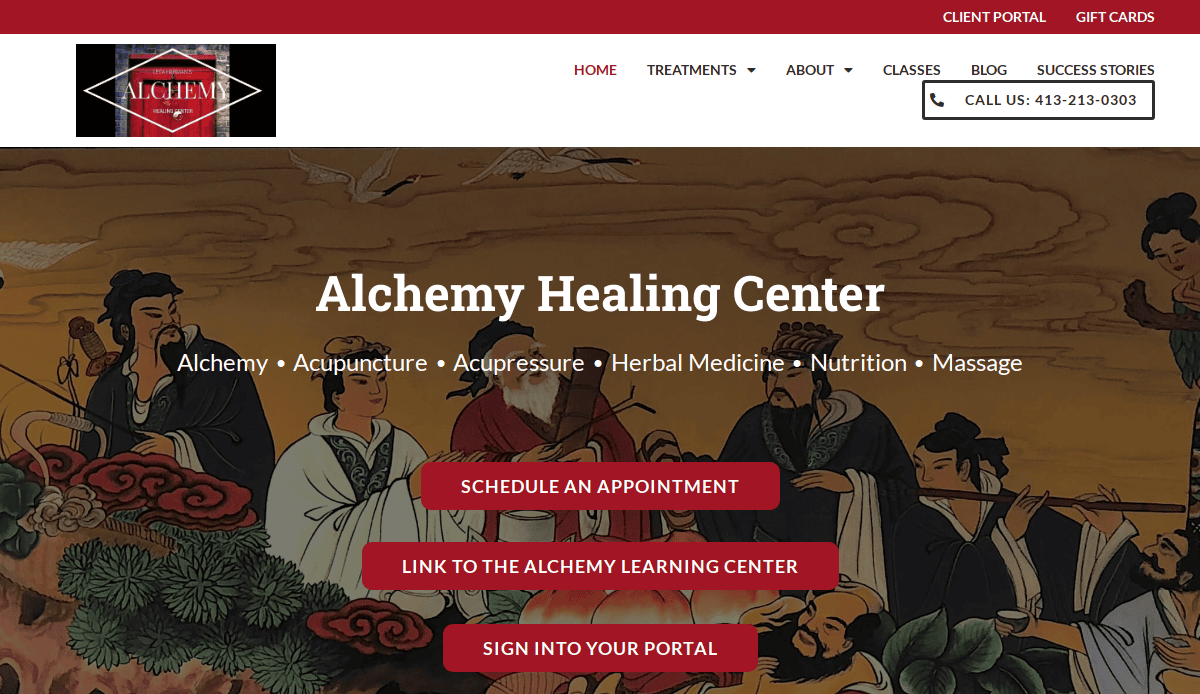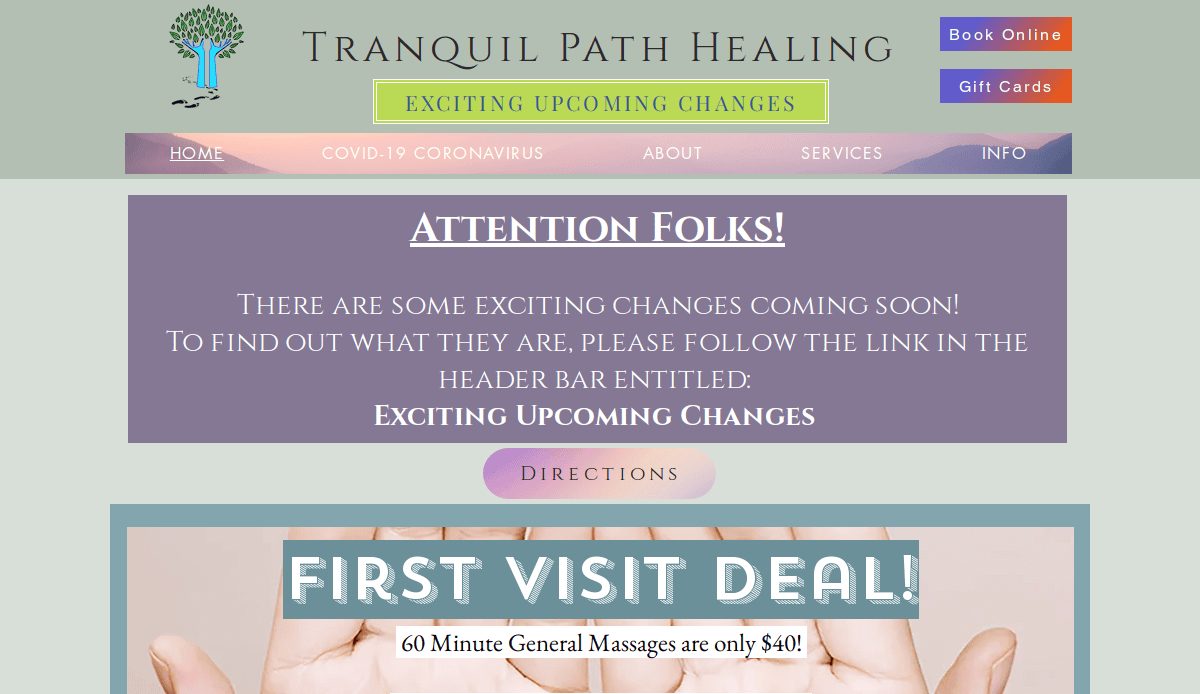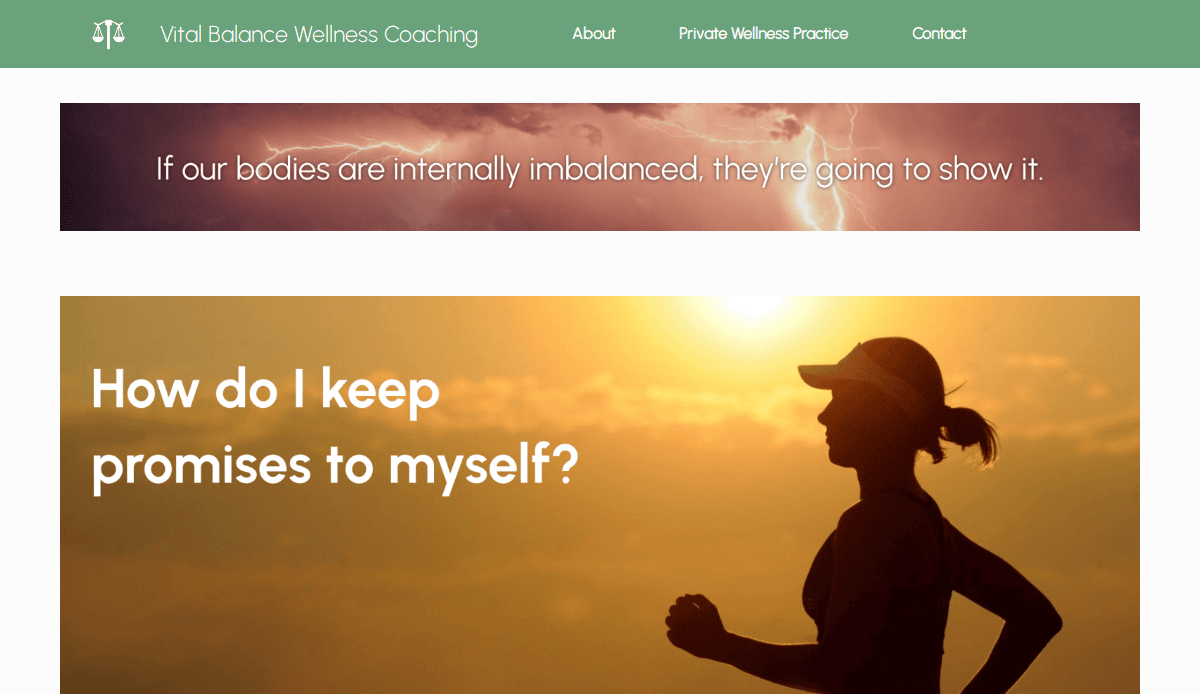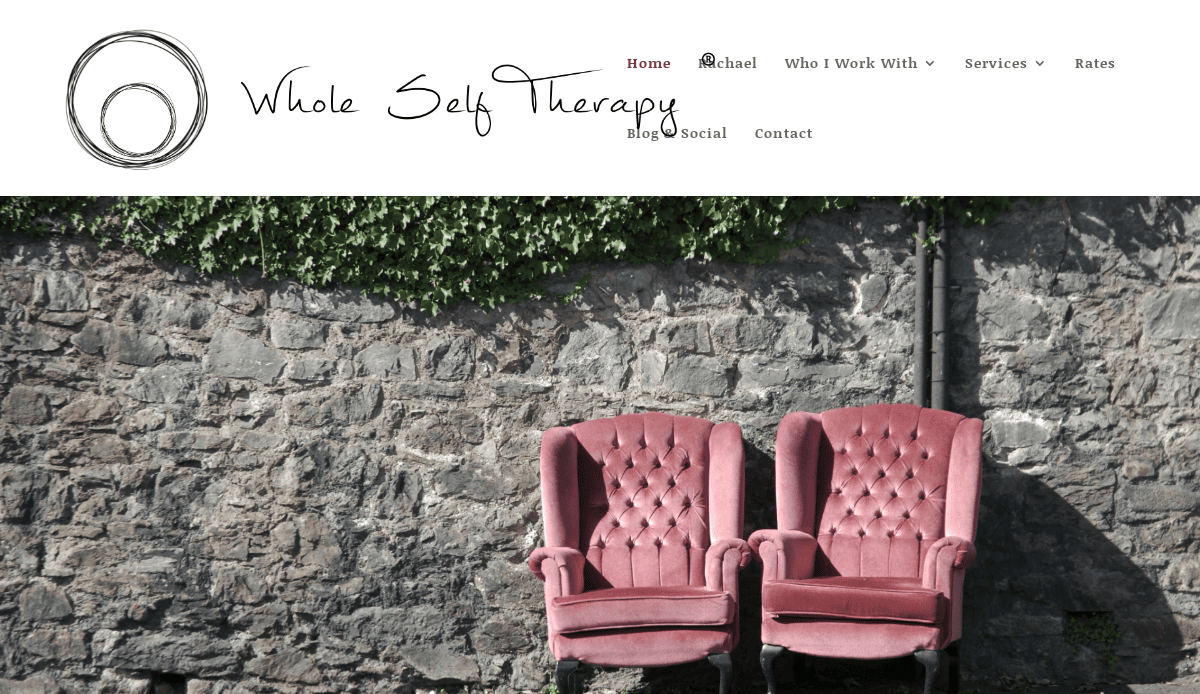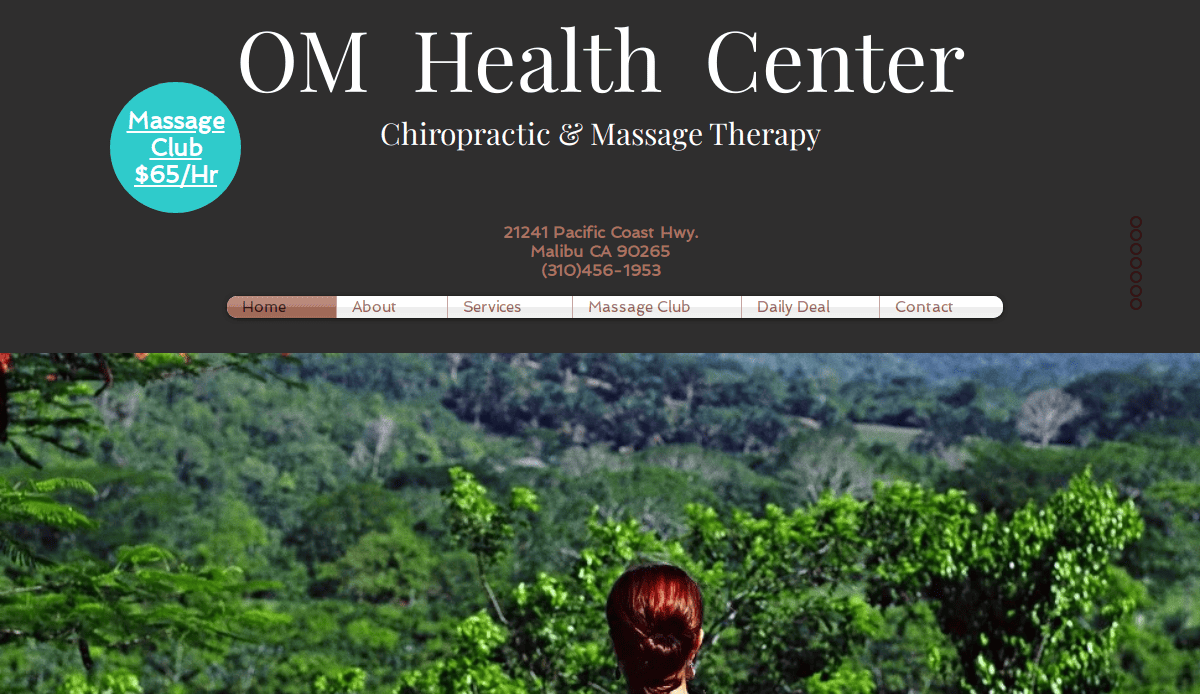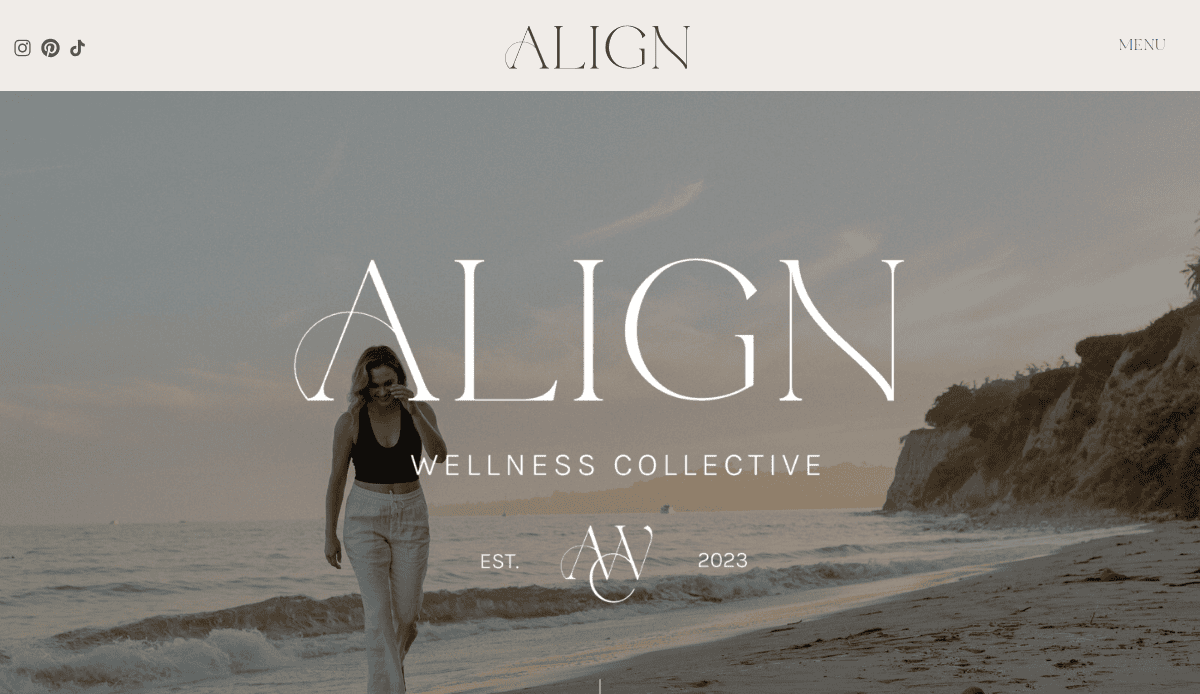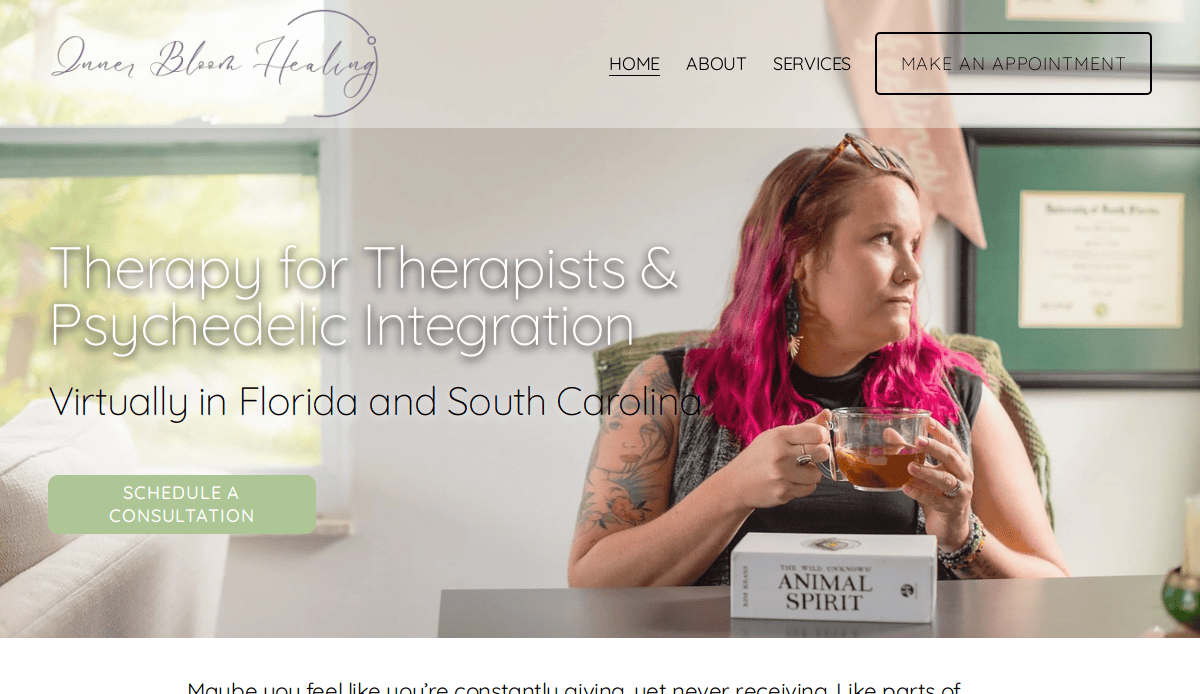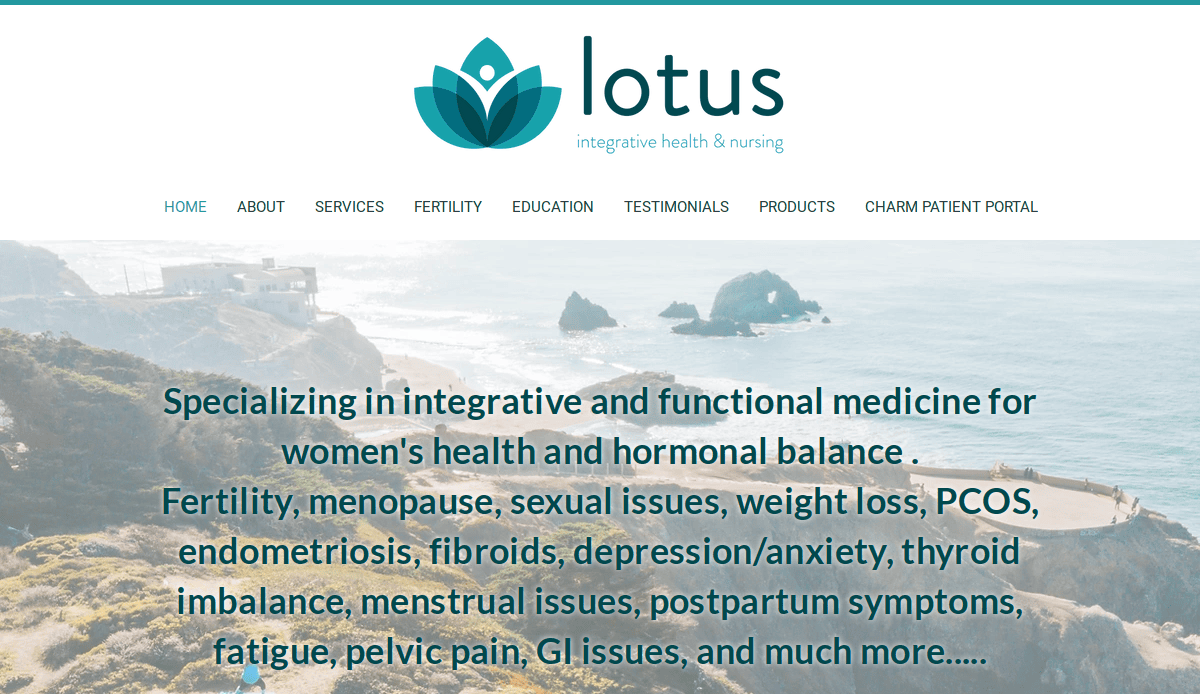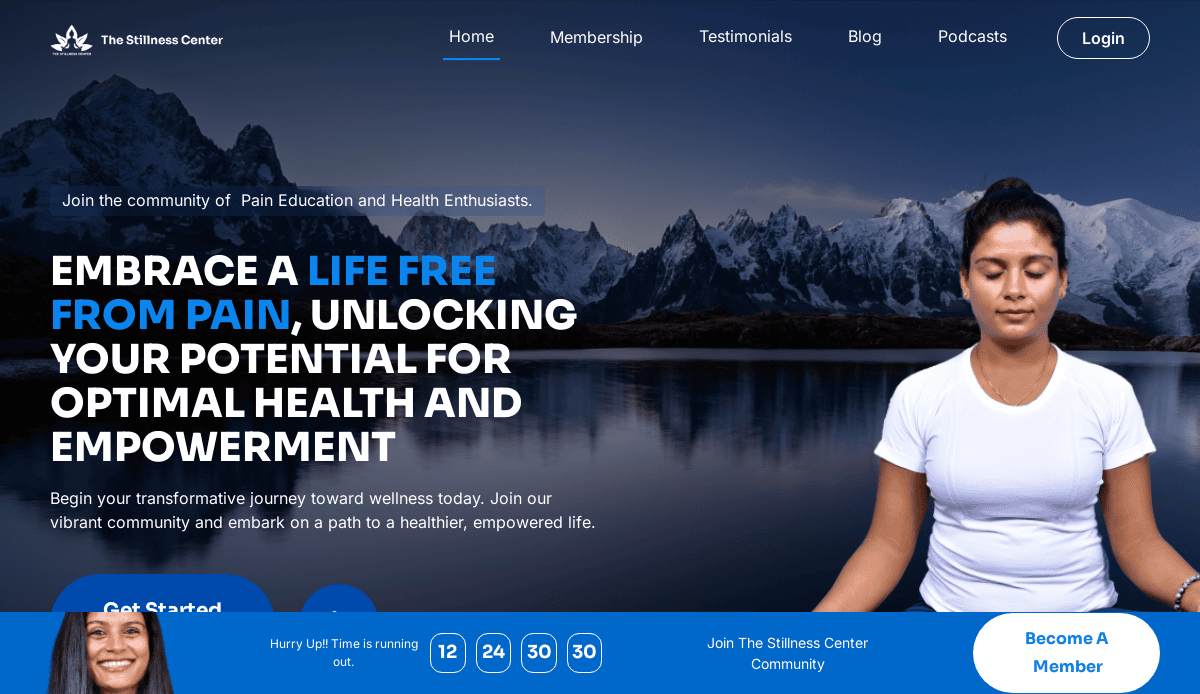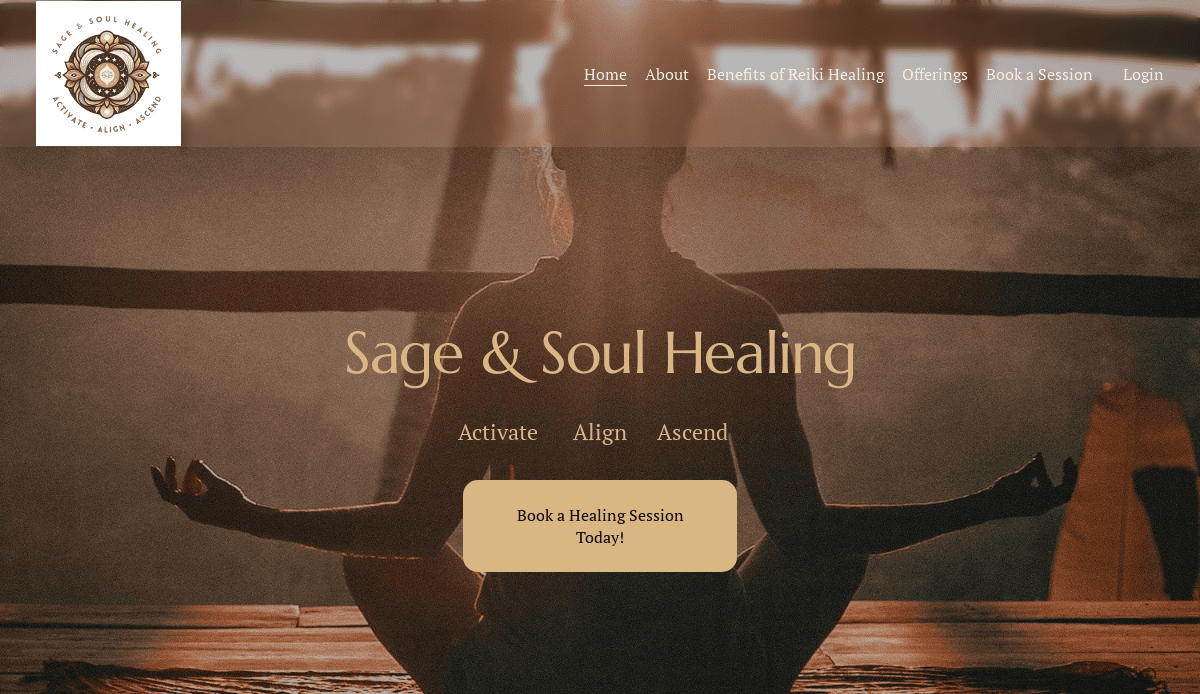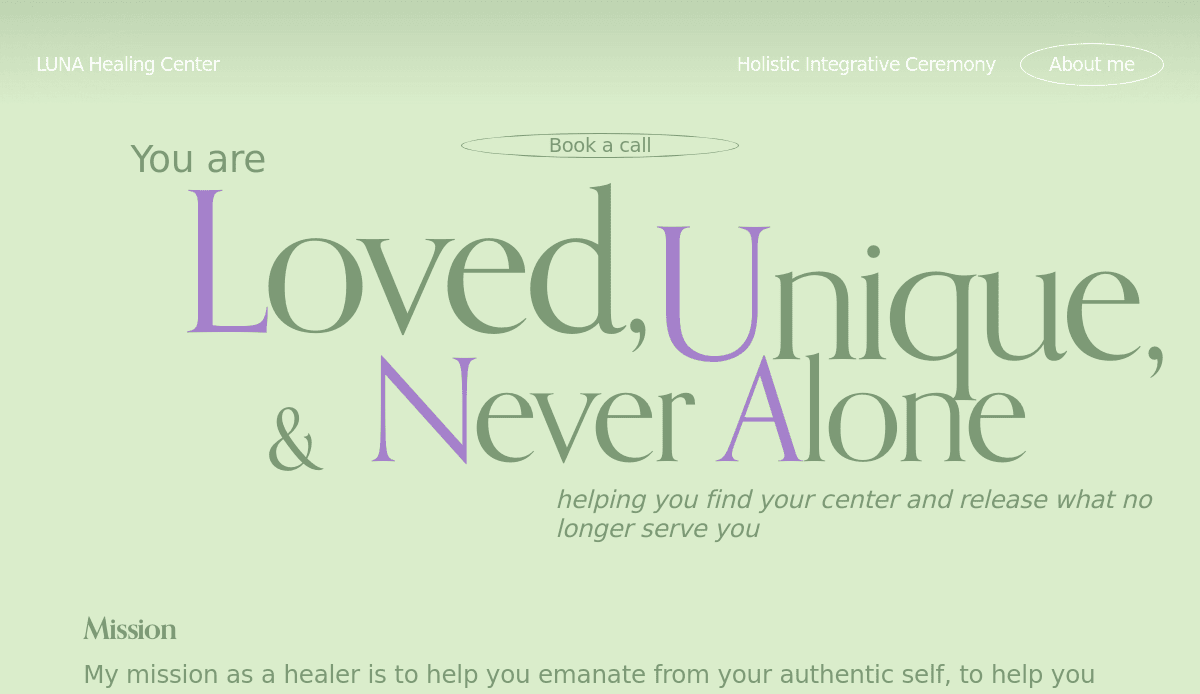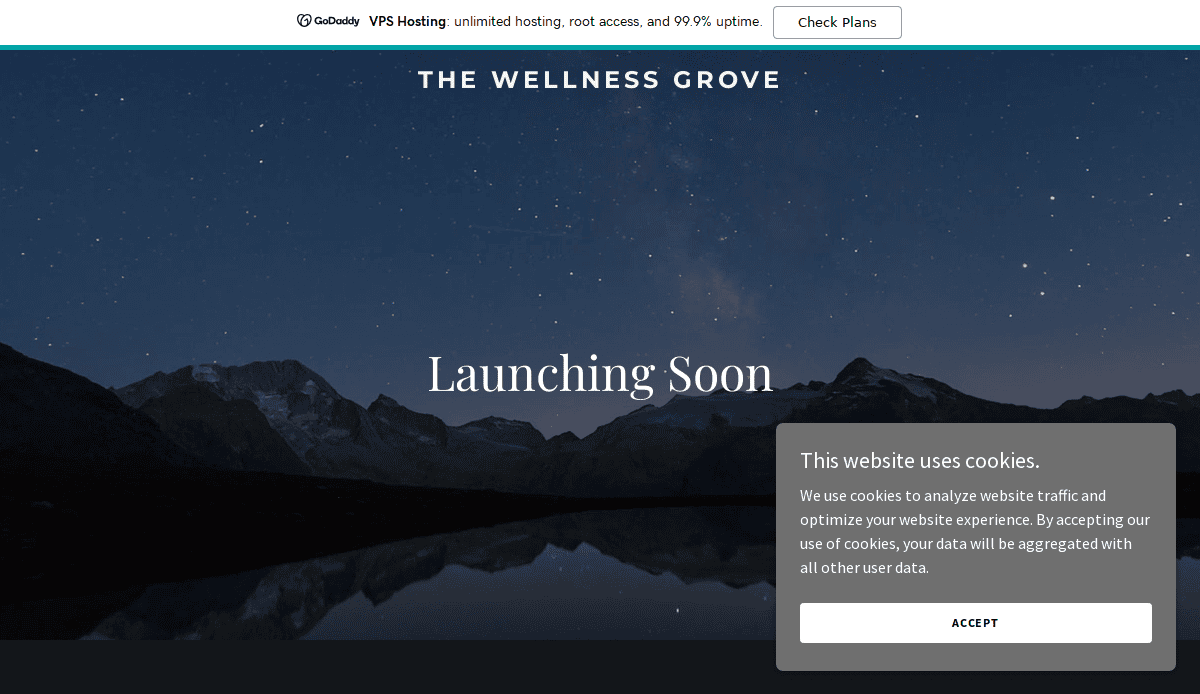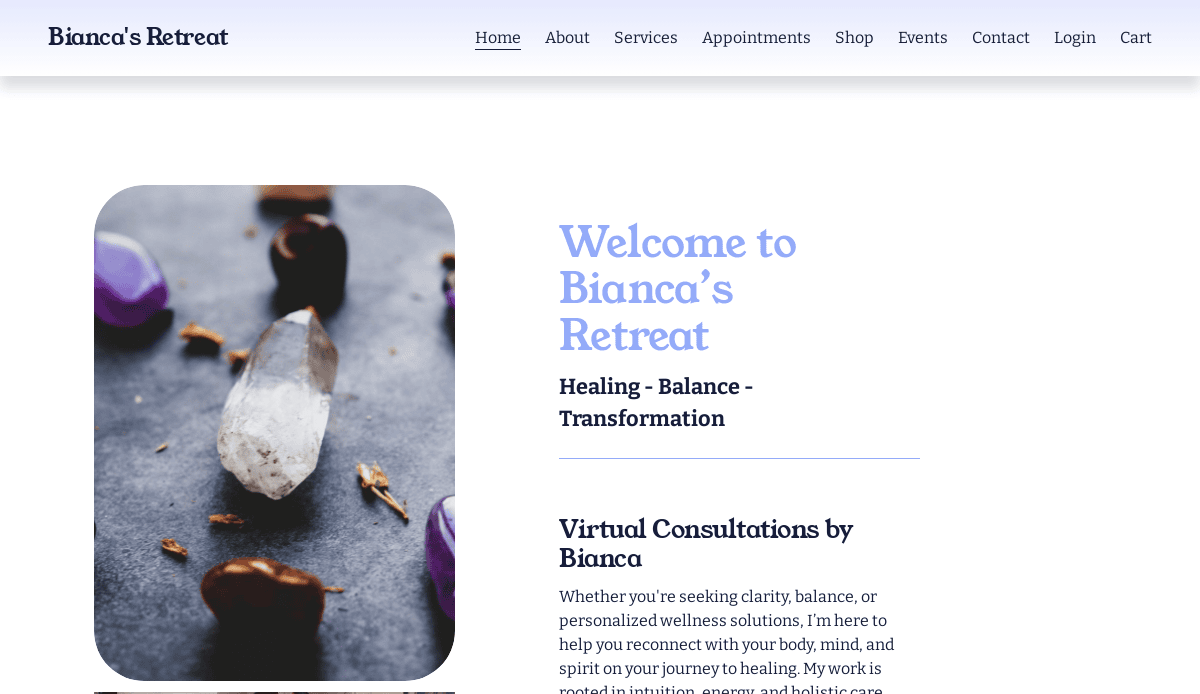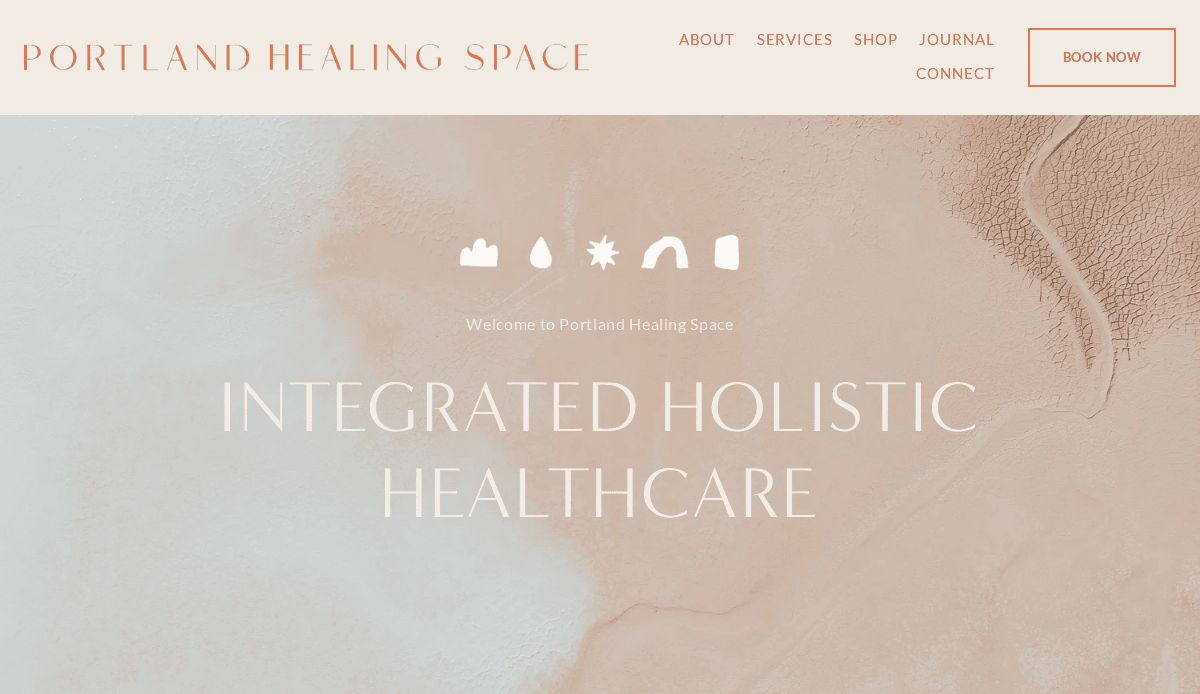Just looking for our Best Holistic Website examples list?
Laying the Foundation: Planning a Purpose-Driven Website
Before diving into visual design or SEO tactics, holistic facilitators must begin with clarity: What purpose will your website serve, and who is it truly for? This planning phase is foundational—it ensures that every design decision supports your business goals and the transformational journey of your clients.
Identify Your Core Intentions
Is your website meant to build credibility, generate leads, provide resources, or book client sessions? In natural medicine, it’s often all of the above. A well-planned site outlines primary and secondary goals from the outset. This allows for seamless user journeys that naturally guide visitors from curiosity to conversion.
Know Your Ideal Client
Understanding your audience is critical. Are they looking for energy healing, nutritional coaching, acupuncture, or integrative therapies? What are their pain points and emotional triggers? Design and content should mirror their values, concerns, and desires. When users feel seen and understood, they are more likely to trust and engage.
Build a Strategic Sitemap
Every page on your website should serve a clear function. Start by mapping out must-have pages: Homepage, About, Services, Booking, Testimonials, Blog, and Contact. Consider adding pages that explain your modalities in depth or answer common questions about your natural approach. This creates transparency, supports SEO, and shortens the decision-making cycle.
Align Brand & Energy
Your messaging is more than a logo—it’s the energy people feel when they land on your site. This includes your voice, color palette, typography, and imagery. All should reflect your values as a practitioner: calm, empowering, nurturing, and trustworthy.
A purpose-driven website doesn’t just look good. It feels right to your clients. That starts with intentional planning—before a single pixel is placed.
Design That Heals: Essential Principles for Site Design
Holistic websites should be more than just attractive—they should embody clarity, trust, and a calming user experience. These design principles create a cohesive online environment that reflects the healing nature of your practice and leads visitors toward meaningful engagement.
1. Simplicity with Intention
Less is more when it comes to web design. Clean layouts with intentional white space allow visitors to focus on your message without distraction. Minimalist designs also load faster and feel more serene, supporting the emotional tone of healing.
2. Thoughtful Navigation
Your navigation should be effortless. Clear menus, accessible calls to action, and consistent page hierarchies ensure users find what they need without confusion. Use clear, descriptive labels—avoid jargon—and include anchor links on longer pages to help users jump to what matters most.
3. Visual Harmony & Color Psychology
Choose colors that reflect your modality and promote calmness—soft greens, warm neutrals, and earthy tones are popular in mind-body brand design. These colors enhance emotional resonance and create visual harmony. Typography should also be legible and aligned with your aesthetic personality.
4. Mobile Responsiveness
Over half of your traffic will come from mobile users. Responsive design ensures your site functions beautifully on all devices. Elements like buttons, text, and images must adjust seamlessly to smaller screens while maintaining a polished look.
5. Emotional Engagement
Use imagery, tone, and layout to evoke trust and serenity. Include elements like testimonial sliders, consultant quotes, or serene imagery of nature and healing sessions. These build emotional connections and support conversion.
6. Accessibility and Inclusivity
Design with all users in mind. Use readable font sizes, sufficient color contrast, and alt text for images. This ensures your website is inclusive and aligns with the values of care and connection that wellness-based practices promote.
When these principles are thoughtfully applied, your website becomes an extension of your healing space—calm, clear, and connected to your mission.
Creating Clarity: How to Structure Content and Navigation for Wellness Sites
Your website’s content and navigation are your digital dialogue with potential clients. In the wellness space, clarity, calmness, and confidence are vital—visitors should never feel overwhelmed or lost. Proper structure ensures your audience receives the right information in the right order, building trust and leading to conversion.
Start with a Clear Hierarchy
Begin with a homepage that summarizes who you are, what you offer, and how visitors can take the next step. Follow this with adaptive second-level pages like About, Services, and Testimonials. Create child pages under Services to describe each modality in more depth—this supports both user understanding and SEO.
Use Empathetic, Purposeful Copy
Each page should reflect a calm and inviting tone. Avoid technical jargon and speak directly to the reader’s concerns and hopes. Break up text with subheadings, bullet points, and visual cues to maintain readability and reinforce your message.
Guide with Smart Navigation
Your main menu should highlight your most important pages in a logical order. Limit it to 5–7 top-level links to avoid confusion. Include a sticky header or floating button for quick access to booking or contact. Footer navigation should reinforce key links and add extras like FAQ, Privacy Policy, or Resource Library.
Support Conversion with Strategic CTAs
Calls to action should be gently persuasive. Use phrases like “Schedule a Discovery Call” or “Explore Our Services” rather than hard-sell language. Position CTAs at natural breakpoints in the content and ensure each leads to a clear next step.
Integrate SEO Naturally
Each page should target specific keywords like “holistic health practitioner in [your city]” or “intuitive healing services.” Use headings (H1, H2, H3) that reflect search intent and make sure internal linking supports page authority and discoverability.
Navigation is not just about structure—it’s about experience. When done right, it helps potential clients feel supported, seen, and ready to take that next healing step.
The Power of Visuals in Web Design: Connecting Through Energy and Imagery
Visual elements are not just decorative—they are communicative tools that shape first impressions, build trust, and evoke emotion. In the natural medicine space, the right visuals can reinforce your values and help clients feel an instant connection to your energy and practice.
Use Authentic Brand Photography
Stock imagery feels generic and impersonal. Instead, invest in brand photography that captures your space, your process, and your energy. Real photos of your practice environment, you working with clients, or peaceful nature scenes build credibility and relatability. These visuals say: “You’re real, and I can trust you.”
Align Visuals with Healing Modalities
Visual content should echo your healing style—whether that’s earthy and grounding, light and airy, or vibrant and energetic. For example, a Reiki specialist may use light-based imagery, while a herbalist might showcase plants and natural textures. This alignment deepens resonance with visitors.
Incorporate Symbolic Elements
Calming visuals often include meaningful symbols—mandalas, lotus flowers, or chakra icons, for instance. Use these subtly and purposefully to support your presence without overwhelming the design. These symbols act as visual affirmations of your practice’s deeper intentions.
Elevate UX with Visual Hierarchy
Design visuals to guide the eye naturally. Use headers, background contrast, iconography, and images strategically to direct user flow. The eye should move from the headline to the value proposition to the call to action. Visual hierarchy keeps users engaged and ensures they absorb your key messages.
Choose Color and Typography Thoughtfully
Your personal palette should promote emotional alignment. Soft tones calm the nervous system; warm neutrals feel nurturing. Similarly, typography should be clean, readable, and aligned with your vibe—no ultra-stiff or hyper-playful fonts. Every visual choice should whisper your brand’s energy.
Balance Design with White Space
Clutter creates stress. White space creates calm. Use spacing intentionally to give your content and images room to breathe. This helps communicate clarity, confidence, and focus—hallmarks of a grounded, wholesome identity.
In health-based website design, visuals are sacred—they carry the vibration of your practice. When done right, they create trust at a glance and guide users to connect more deeply with your healing work.
Holistic Wellness Web Design Examples
1. Alchemy Healing Center – Sedona, AZ
- Key Takeaways:
- Immersive video header introducing modalities
- Chakra-aligned color scheme enhances emotional engagement
- Clean CTA with integrated scheduling tool
2. Tranquil Path Healing – Seattle, WA
- Key Takeaways:
- Clean layout with adaptive navigation improves user experience.
- The testimonials section adds social proof and builds trust.
- Mobile-optimized design ensures seamless browsing on smartphones and tablets.
3. Vital Balance Wellness – Denver, CO
- Key Takeaways:
- Vibrant visuals and consistent branding create a memorable impression.
- Detailed service pages provide comprehensive information to potential clients.
- Newsletter signup encourages ongoing engagement with visitors.
4. Inner Light Wellness – Austin, TX
- Key Takeaways:
- Spiritual but modern design with flowing gradients
- Gentle copy tone reflects the practice’s energy work
- Scroll-triggered storytelling enhances visitor engagement
5. Whole Self Therapy – Chicago, IL
- Key Takeaways:
- Balanced use of whitespace and imagery for serenity
- Homepage captures identity essence within 5 seconds
- Strong therapist bios and credentials display
6. Moonflower Healing Arts – Santa Fe, NM
- Key Takeaways:
- Ethereal color palette and clear navigation
- Home-page driven user journey toward bookings
- Use of video testimonials adds authenticity
7. Om Holistic Health – Seattle, WA
- Key Takeaways:
- Clear homepage hierarchy and calming fonts
- Trust-building through a blog and FAQs
- SEO-optimized for targeted search queries
8. Harmony Wellness Clinic – Austin, TX
- Key Takeaways:
- Engaging homepage with clear calls-to-action guides visitors effectively.
- The informative blog section enhances SEO and provides value to users.
- Professional imagery builds trust and credibility.
9. Align Wellness Collective – Ann Arbor, MI
- Key Takeaways:
- Collective brand story enhances care provider trust
- Earth-toned palette and airy design elements
- Modular page layout for easy navigation
10. Flow Wellness Studio – Brooklyn, NY
- Key Takeaways:
- Clean, contemporary design with urban appeal
- Visual consistency between social media and the website
- Interactive calendar and community event promotion
11. Inner Bloom Healing – Phoenix, AZ
- Key Takeaways:
- Use of warm, spiritual imagery and grounding colors
- Scroll-based content sections for storytelling
- Blog and newsletter integration builds engagement
12. Lotus Integrative Health – Santa Monica, CA
- Key Takeaways:
- Calm pastel color scheme mirrors the brand’s holistic vibe
- Transparent specialist bios and service pricing
- Strong integration of booking and telehealth features
13. The Stillness Center – Miami, FL
- Key Takeaways:
- Full-width video hero conveys a serene atmosphere
- Emphasis on sensory experience through color and animation
- Integrated lead capture form and online scheduling
14. The Mindful Haven – Albuquerque, NM
- Key Takeaways:
- Ethereal background visuals and subtle gradients
- Easy access to session booking and descriptions
- Consistent iconography builds brand identity
15. Sage & Soul Healing – Portland, OR
- Key Takeaways:
- Spiritual branding elements like mandalas and sage
- Scroll-based site journey with a meditative pace
- Email capture incentives: free guided meditation
16. Luna Healing Center – Asheville, NC
- Key Takeaways:
- Gentle earth-tone palette reflects natural healing
- Simple, inviting booking experience
- Strong integration of client testimonials
17. The Wellness Grove – Boulder, CO
- Key Takeaways:
- Emphasis on holistic education through a robust blog
- Strong branding and local SEO optimization
- Calming visuals matched with a clean layout
18. Sacred Synergy Wellness – Sedona, AZ
- Key Takeaways:
- Full-width imagery evokes spiritual energy
- Clear service menu segmented by modality
- Deep storytelling in therapist bios
19. Portland healing Space – Portland, OR
- Key Takeaways:
- Spiritual branding elements like mandalas and sage
- Scroll-based site journey with a meditative pace
- Email capture incentives: free guided meditation
These examples exemplify success!
Ready to Grow Your Alternative Health Practice Online?
If you’re a healer, specialist, nutritionist, or life coach running a mind-body business, your website is more than just a digital brochure—it’s a powerful tool to attract and engage your dream clients. Whether you need a calming health and wellness website, a robust platform for retreat centers, or a conversion-optimized design for therapists, our design studio specializes in creating websites for holistic businesses that reflect your energy, vision, and goals.
From intuitive design to custom website design, we build fully customized sites that drive organic traffic to your website. We also help you manage your website, integrate email marketing, and launch a winning marketing strategy, ensuring that your web presence stands out in the competitive wellness industry. Our experienced website designer and design team blend aesthetics with search engine optimization, content creation, and smart digital marketing to help you grow your wholeness practice and expand your impact.
Don’t settle for a generic template—invest in a strategic web presence built to convert and connect. Explore how our website and marketing experts can elevate your online presence with clarity, visual interest, and brand cohesiveness.
Get started on your new website today with our website design experts!
Holistic Website Design: Commonly Asked Questions
What should a website for holistic practitioners include?
A website designed for wellness professionals should include a calming design aesthetic, clearly outlined services, facilitator bios, testimonials, and an easy-to-use booking system. Whether you’re an acupuncturist, energy healer, or nutritionist, every element should speak to trust, credibility, and transformation.
How does design for wholesome businesses differ from other industries?
These sites prioritize an effortless user experience, soft color palettes, and nurturing visuals. It’s less about flashy graphics and more about creating a healing environment online that resonates with your site visitors and reflects your practice’s values.
Why is marketing important for wellness professionals?
Wholeness marketing takes a whole-practice approach, aligning your message across your website, social media, and content. For wellness professionals, it helps build authority and deepen client trust. Learn more about our marketing services for integrative businesses to expand your reach.
Can a website help grow my business?
Absolutely. A well-optimized, conversion-focused website can grow your business by increasing leads, attracting qualified clients, and establishing credibility in your niche.
What SEO strategies work best?
Local SEO, keyword-rich service pages, and high-quality blog content are crucial. Our team integrates search engine optimization into every build to ensure your practice ranks and attracts local site visitors.
Do I need a blog for my wellness website?
Yes. A blog helps establish thought leadership and supports SEO. Sharing insights, FAQs, and wellness tips builds trust and keeps your audience engaged.
How long does it take to launch a new website?
On average, 4–8 weeks. This includes planning, design, content, testing, and launch. Projects vary depending on customization, number of pages, and integrations.
Can I integrate booking and email marketing tools?
Yes. We design websites that integrate with tools like Calendly, Square, Mailchimp, and ConvertKit to help you automate email marketing and client appointments.
Is your team experienced with therapists and wellness professionals?
Definitely. We’ve built websites for holistic professionals, including specialists, coaches, acupuncturists, and integrative wholesome centers. Explore our custom web design services to learn how we support niche healers.

